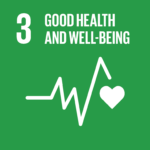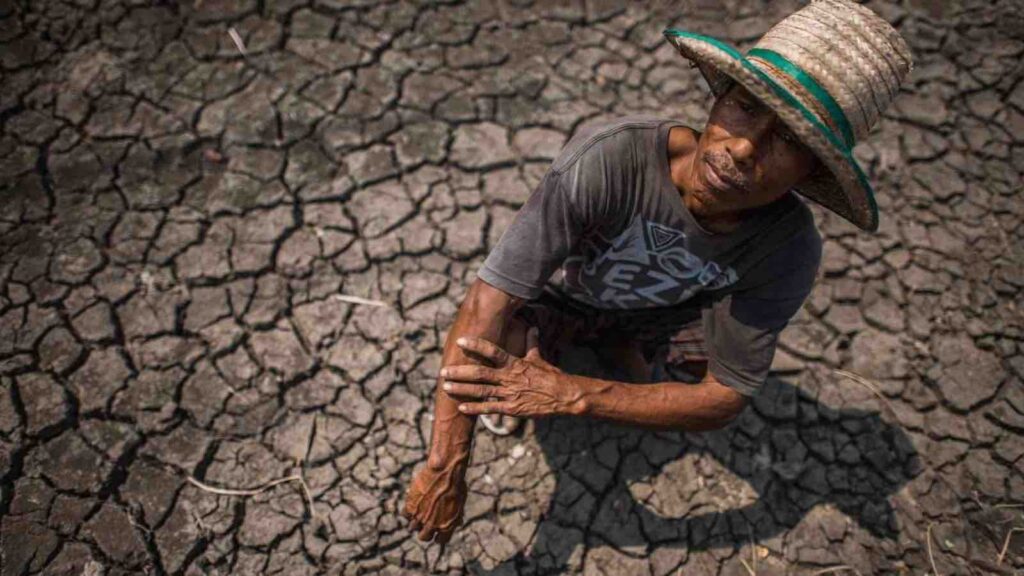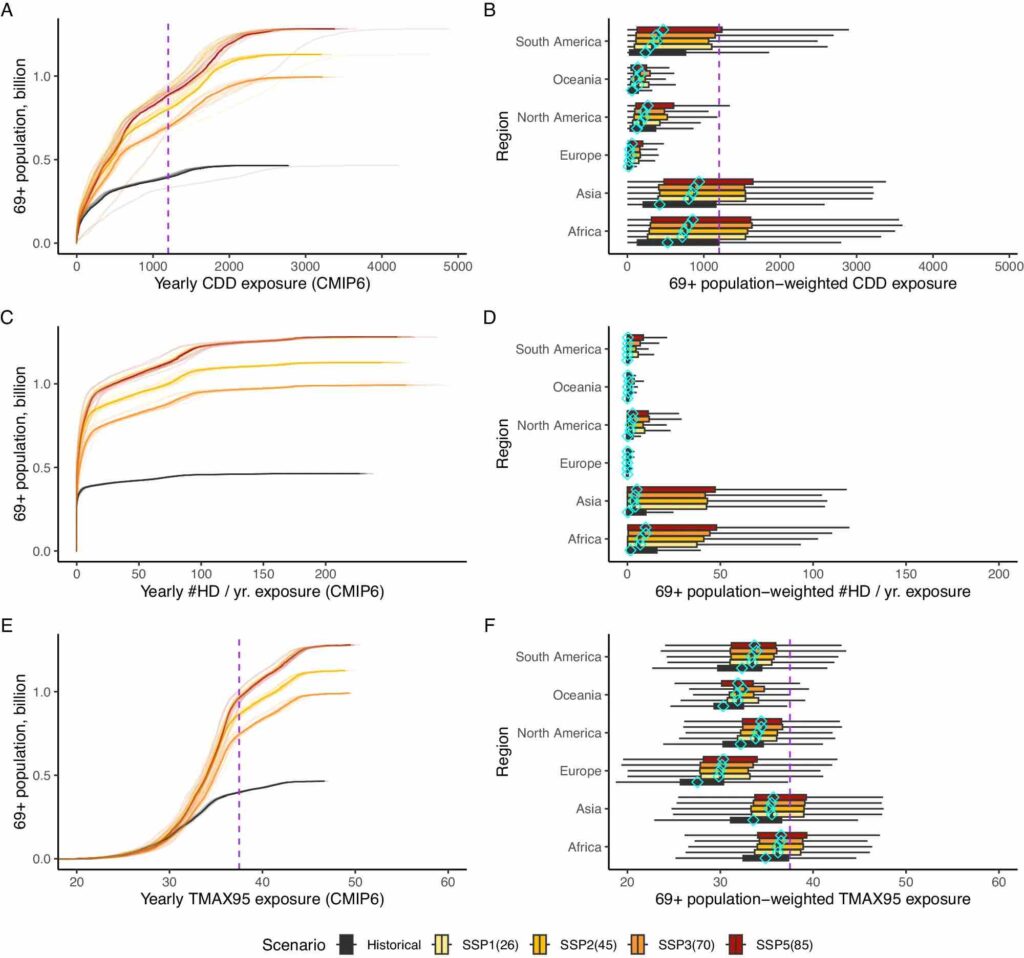In 20250, at least 23% of the global population aged 69+ will inhabit climates whose 95th percentile of daily maximum temperature exceeds the critical threshold of 37.5 °C
As soaring temperatures fueled one of South Asia’s deadliest heat waves on record this spring, disturbing images emerged of voters passing out while waiting to cast ballots and teachers desperately fanning sweltering classrooms.
The human costs of extreme heat are visceral and increasingly borne by the world’s most vulnerable — its rapidly growing elderly population. It’s a crisis years in the making as climate change accelerates and the globe grows grayer.
RELEVANT SUSTAINABLE GOALS


“We’re facing a looming environmental catastrophe driven by the intersection of two inexorable forces — rising temperatures and an aging population,” said Dr. Mila Araujo, director of the World Health Organization’s age-friendly environments program. “Too often, older adults are the tragic leading edge of this crisis.”
A Deadly Mix
By 2050, the number of people over 60 is projected to exceed 2 billion, more than double today’s total, with the majority residing in developing nations least equipped to cope with extreme weather. Overlaying this “gray tsunami” with climate modeling reveals that over 250 million more elderly people could be routinely exposed to potentially lethal heat waves compared to the present.
The human body’s capacity to regulate temperature declines with age. Common health conditions like heart and kidney disease exacerbate heat vulnerability. Medications that regulate fluid retention can quicken dehydration.
Even nighttime temperatures in the 80s Fahrenheit can pose severe risks for sedentary seniors by disrupting sleep cycles and straining biological cooling mechanisms.
“When we look at mortality data from past heat waves, a clear pattern emerges — older adults account for the overwhelming majority of deaths,” said Araujo. “It’s a public health crisis awaiting emergency response.”
In the United States, heat claimed over 1,000 lives in 2022 according to provisional data, with those 65 and older comprising around 80% of the toll. But while America’s older population shrinks as a share of total residents over coming decades, a stark demographic reversal is underway across Africa, Asia and Latin America.
“The regions facing the greatest climate threat also have the most rapidly aging populations and fewest resources dedicated to protecting their elders,” said Biran Hosseini, a researcher with the Sloan Center on Aging & Work who models heat risk impacts.
Systemic Cooling Poverty
In India, home to 200 million elderly, April and May saw peak temperatures over 120°F (49°C) that killed hundreds of mainly older people. Many lived in tin-roofed slums or lacked access to cooling shelters and respite from the heat. Similar stories played out across swaths of the Global South facing “systemic cooling poverty.”
“We need to reimagine how urban spaces and housing are designed, with cooling access prioritized as a basic human right for the aged rather than a luxury,” said Hosseini. “Passive cooling, greening cityscapes, affordable AC — all have to be urgently embraced at scale.”
Even affluent nations will need to rethink elder care systems and infrastructure originally designed for more temperate climates. Researchers warn that climate change could overwhelm the sustainability of programs like Medicare and cripple unprepared nursing homes and senior housing facilities during future heat calamities.
“The magnitude of deaths could easily dwarf past disasters like Hurricane Katrina if we don’t quickly adapt housing, healthcare and emergency planning for the reality of population aging and climate change,” said Bill Roberds, an urban resiliency specialist with AARP. “So far, we’re tragically behind the curve.”
A Preventable Crisis?
Some argue the intersection of global warming and aging demographics was an entirely foreseeable crisis. Medical researchers and international organizations have been raising alarms about the compounding effects for over a decade.
Yet investments in protecting aging populations from climate impacts remain limited, with paltry funding for critical resilience measures from redesigning senior housing codes to bolstering in-home nurse workforces for heat emergencies.
Worsening inequality between younger and older populations could further exacerbate the burden.
“We’re witnessing the emergence of a grim climate apartheid where older people are relegated to being sacrificial lambs in the face of worsening environmental pressures,” said Hosseini.
With heat fatality forecasts only expected to worsen through the century, experts insist the time to treat aging populations as key frontline communities has already arrived — however politically challenging or costly the prevention measures.
“We have a choice to make as a global society — protect our elders with adaptation investments today or be condemned to unconscionable death tolls tomorrow,” said Araujo. “Morally, economically, there is no other ethical option.”



